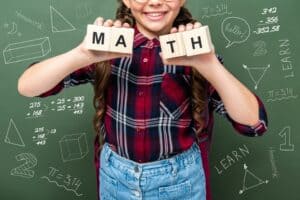WHAT MATH CURRICULUM SHOULD I CHOOSE FOR HOMESCHOOLING?

One Mom’s Take on Teaching Elementary Math
This is one mom’s perspective on teaching elementary math and choosing the right curriculum. Every family’s homeschool journey is unique, so if you have any favorite math programs or tips, feel free to share them with us below — we might include your recommendations in a future post. Thanks for contributing to the homeschool community!
My Math Curriculum Journey
After trying several different approaches, I’ve learned that math curriculum really shapes how confident kids (and parents!) feel about learning math.
I started out with Abeka, which follows a spiral approach — meaning concepts are revisited frequently in small increments. I loved the repetition and structure. But around 2nd or 3rd grade, I began to notice it lacked enough critical thinking practice.
That’s when I discovered Singapore Math, which takes a mastery approach. It focuses on deep understanding before moving to new topics. Now, I use Singapore Math as our primary curriculum but still pull from Abeka for review and reinforcement. The two balance each other well.
Curriculums we use:
Making Math Fun at Home
We play a lot of math games at home. Nothing complicated — just flashcard races and “beat-the-timer” challenges. The kids compete against each other (and sometimes me!), and whoever wins gets a prize.
Prizes can be simple — stickers, pencils, small toys, a trip to Dollar Tree, Pokémon cards, or extra tablet or Nintendo time. It keeps math lively and motivates them to master new skills quickly.
Our Favorite Math Flashcards & Tools
These are the cards and resources we’ve used to strengthen math skills from 1st–5th grade. I’ve found them super helpful for mastering facts and playing quick review games.
Flashcards & Concept Cards
Teaching Charts
I rotate these on the wall depending on what we’re working on:
Where to Find Affordable Materials
These resources can get pricey, so I buy most of them secondhand. Facebook and eBay are great places to find Abeka bundles and lightly used flashcards.
Helpful Facebook groups for Abeka resale:
- Abeka Homeschool Curriculum Buy/Sell/Trade Group 1
- Abeka Homeschool Curriculum Buy/Sell/Trade Group 2
Foundational Early-Grade Tools
These early learning cards helped my kids in 1st and 2nd grade build a solid foundation:
Why I Love Singapore Math
I also buy the teacher’s manuals and sometimes use the videos if we get stuck. Singapore Math teaches concepts in a way that’s very different from how most of us learned — it’s visual, hands-on, and encourages reasoning.
At first, it felt intimidating, but learning alongside my kids has been such a gift. I used to say, “I’m not a math person,” but now I genuinely enjoy it. Changing our math curriculum completely transformed our homeschool experience.
Even though I barely scraped through college math, after six years of teaching these programs, I’m stronger at computation and problem solving than ever. Math isn’t just numbers — it’s the foundation for all sciences and critical thinking.
Singapore Math Tips & Videos
It’s often recommended to start half a year to one full grade below your child’s current level because Singapore Math tends to be more advanced. You can also take their free placement test to find the right starting point.
Singapore Math offers several series — we’ve used both Primary and Dimensions, and while the core concepts are the same, we prefer the Dimensions line.
Final Thoughts
If you’re unsure about switching math curriculums, I get it — it’s a big change. But don’t be afraid to try something new. The goal isn’t just to “get through” math; it’s to understand it deeply and make it enjoyable.
Homeschooling gives us the freedom to adjust and explore what works best for our kids — and for us as parents. You might just find, like I did, that learning math all over again can actually be fun.